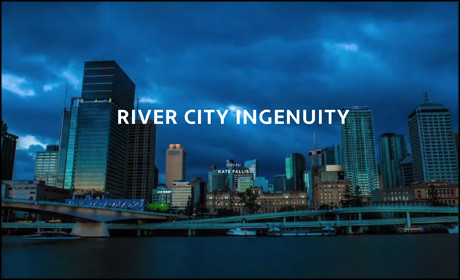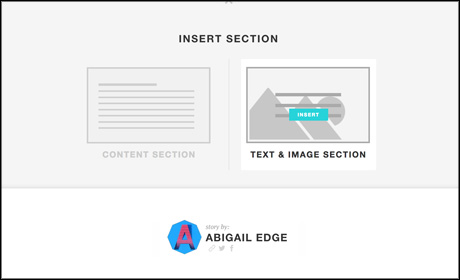
Shorthand, the immersive storytelling platform, has launched a new tool aimed at freelancers interested in producing long-form, media-rich content.
Immersive enables users to create engaging stories which combine text, photos and videos in a responsive format suitable for viewing on different devices and screen sizes.
"The whole approach with Immersive was off the back of Shorthand and the stories we're seeing produced by publishers," Shorthand founder Ben Fogarty told Journalism.co.uk.
Shorthand launched in private beta in November 2013. Since then, the team have worked with news outlets such as the Guardian and the BBC, who used it to produce this piece on Brazil's iconic statue of Christ the Redeemer.
Fogarty explained that the new platform has been built to incorporate key insights from Shorthand in terms of best practice storytelling techniques and the most effective ways to engage audiences.
"What we wanted to do is bring a very easy way for freelancers and individuals to be able to produce those core features," he said.
Similar to Shorthand, Immersive uses in-line editing to allow users to see exactly how a story will look as they are building it.
Users can also re-size their screen as they build to see how their story will appear on different screen sizes, with content arranged responsively.
Other key features include the ability to add a full-width cover image or video, below which stories can include a mix of text-based sections and full-width images overlaid with text – a method which works well for chapter headings or quotes.
Users can also create a profile displaying their name, photo and links to their website and social accounts, which appears at the bottom of each story they publish.

Screenshot from Immersive.sh
Immersive was "soft launched" a week ago with private invitations sent to around 200 people. Since then, said Fogarty, there have been more than 30 stories published.
The platform is still in beta, and users are able to make suggestions, vote for future features or report bugs via a "knowledge centre" accessible from the bottom-right corner of the screen, which also includes 'how to' guides and tips for best practice.
"We're really looking for that community involvement and that feedback from the people that are using the tool," said Fogarty.
He added that the Shorthand team is keen to see how Immersive is used by freelancers, and whether individual journalists have the multimedia content available to them to produce these kind of stories before they "build it out" with more features.
"One of the things we're testing is, is there an appetite for it and can people get the content together to make these stories and be happy with them, and it seems the answer so far is yes," he said.
Anyone who visits Immersive.sh can now create an account and publish a story for free within the first 30 days.
Fogarty said the team has not yet decided whether Immersive will be funded by a monthly or annual pricing plan, or if users will pay per published story, and this is one of the features users can vote for via the "knowledge centre".
Though inspired by Shorthand, Immersive also does not offer some of the key features which make the original platform so flexible, such as self-hosting, the ability to add branding, and do more advanced customisations using CSS, Javascript and HTML.
Immersive is therefore unlikely to appeal to larger news outlets which are likely to prefer more control over how content looks, and publish on their own URL.
However, for smaller news outlets Fogarty pointed out that Immersive "might be a great way to do special features and link off from their own site and see how the audience react to these sorts of stories".
Unlike on Shorthand, analytics are also not currently available for Immersive, although Fogarty noted "that's definitely one of the next things on our road map".Where the whole publishing industry is at at the moment is these stories are still experimentsBen Fogarty, Immersive
"And not just any analytics as well, but the analytics we think make sense to this sort of format," he added.
"So for example, scroll depth to the story – how far are people actually going, how much time are they spending on the various sections of your story, time on page – things that are really centered around engagement of these types of stories, not just general analytics."
Other future features under consideration include text overlay sections for video, the ability to add a full-width video player, integrations with further publishing tools such as Vimeo and Soundcloud.
There has been much talk recently about the idea of the 'journo-coder', a person who is able to combine skills in journalism and data programming.
However, Fogarty believes that the advantage of using a platform such as Immersive over coding your own comes down to "the time and the cost factor".
"I also think that where the whole publishing industry is at at the moment is these stories are still experiments," he said.
"Our advice to any publisher or individual has always been, the quicker we can get these [stories] out, learn about the audience, learn about engagement, see what works and what doesn't work, the better these stories are going to be.
"And we might find in 12 months time there's a better way to tell stories than this sort of format, but the only way we're going to get there... is to do quick iterations of getting stories out there and not trying to make everything the biggest and the best every single time and taking months and months in between projects."
"So while [using Immersive] you might not have everything the way you would if you could code yourself or spend six months on a project," he said, "you get to be able to do a lot more stories a lot more cost effectively and learn about your audience as you go."
Update: This article was updated to add detail to the pricing plans under consideration.
Free daily newsletter
If you like our news and feature articles, you can sign up to receive our free daily (Mon-Fri) email newsletter (mobile friendly).









